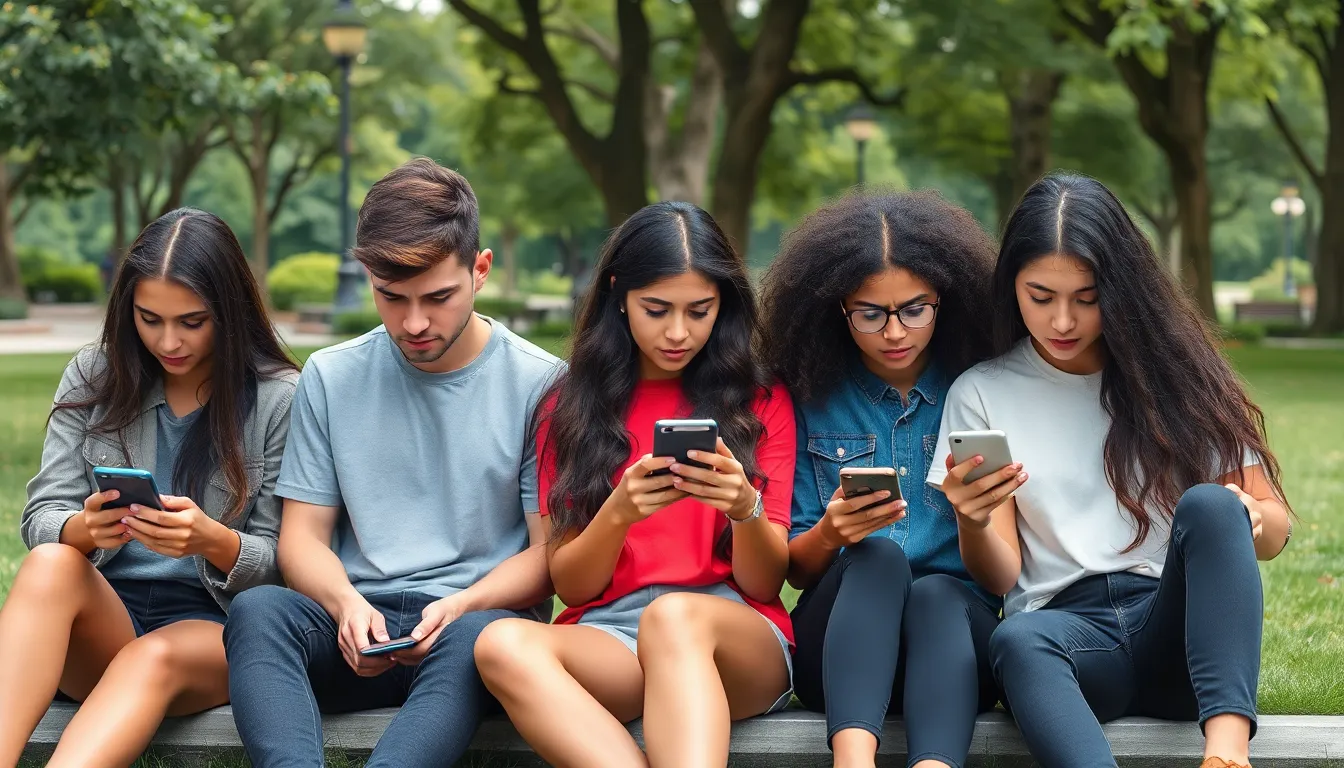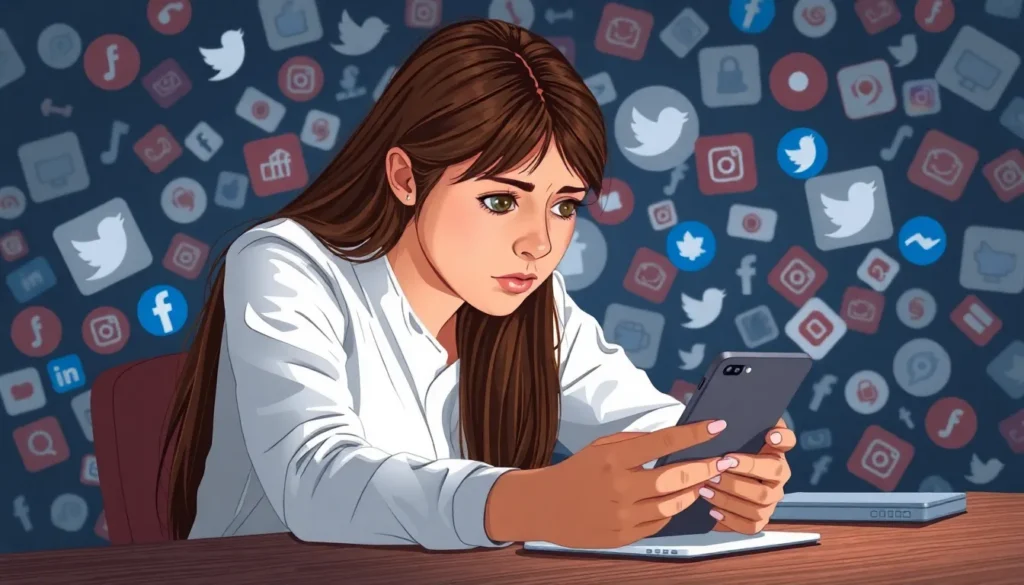Social media can be a wild ride, filled with cat videos and endless memes, but lurking beneath that fun surface are some seriously dangerous trends. One moment, you’re watching a dance challenge, and the next, you’re witnessing someone attempting a stunt that would make even a stunt double cringe. It’s a digital jungle out there, and not all the vines are safe to swing from.
As users scroll through their feeds, they might unknowingly stumble upon trends that could lead to injury or worse. From bizarre challenges to reckless dares, these viral sensations can spread faster than a rumor at a high school reunion. In this article, we’ll dive into the most alarming trends making the rounds, serving up a mix of humor and caution, because let’s face it—nobody wants to be the star of the next “what not to do” video.
Dangerous Trends on Social Media
Dangerous trends on social media frequently emerge, captivating users with their viral appeal. Reckless challenges invite participation, encouraging individuals to engage without understanding the potential risks involved. For instance, the Tide Pod challenge gained attention as users ingested laundry detergent pods, resulting in serious health complications, including poisoning.
Another alarming trend, the “Skull Breaker Challenge,” involves two individuals kicking the legs out from under a third person, causing falls that can lead to fractures or concussions. Statistics indicate that emergency room visits due to social media-related injuries have increased by over 100% in recent years, highlighting the grave consequences of these trends.
Misinformation also spreads rapidly through social media platforms, which can lead to harmful behavior. For example, conspiracy theories regarding health treatments, like the false claims about COVID-19 cures, have put lives at risk. Individuals who trust these misleading narratives may forego essential medical advice, endangering their health.
Cyberbullying ranks among the serious issues stemming from social media usage. Victims often experience anxiety, depression, and other mental health challenges as hurtful comments and threats circulate online. Studies show that nearly 60% of young people have encountered cyberbullying, demonstrating its prevalence and severe impact on mental well-being.
Perceptions of reality can be distorted through curated social media feeds, leading individuals to engage in self-destructive behaviors. The pressure to conform to unrealistic beauty standards often drives users to unhealthy choices, such as extreme dieting or excessive exercise. Awareness of these trends is crucial to foster a safer online environment and protect vulnerable populations from harm.
Psychological Impacts of Social Media Trends

Social media trends significantly affect psychological well-being. Frequent engagement with these platforms leads to various mental health challenges.
Fear of Missing Out (FOMO)
FOMO drives users to stay constantly connected to social media. Users experience anxiety and unease, believing they might miss meaningful experiences shared by others. This feeling can result in compulsive checking of notifications, disrupting daily activities. According to recent studies, about 56% of social media users report experiencing FOMO regularly. Repeated exposure to curated lifestyles fosters feelings of inadequacy, fueling a cycle of negative emotions. Improved awareness can help users recognize these patterns and limit their social media use.
Cyberbullying and Online Harassment
Cyberbullying poses a severe threat to mental health, particularly for young individuals. Approximately 60% of teens experience some form of online harassment. Victims may suffer from depression, anxiety, and low self-esteem, significantly impacting their daily lives. The anonymity of online interactions often emboldens aggressors, making it easier to target others. Addressing cyberbullying requires both awareness and intervention from peers, parents, and educators. Online platforms must also take proactive steps to create safer environments for users. With combined efforts, communities can combat this pervasive issue.
Popular Dangerous Trends
Social media hosts various dangerous trends that pose serious risks. Specific challenges and fads lead to harmful behavior among users.
Challenge Trends
Challenge trends frequently capture attention on social media. Repeatedly, individuals attempt risky challenges, resulting in severe injuries. The TikTok “Skull Breaker Challenge” resulted in multiple emergency room visits due to head injuries. Another prominent example includes the Tide Pod challenge, which posed poisoning risks to participants. Virality often overshadows safety, as thrill-seekers prioritize views over well-being.
Misinformation and Fake News
Misinformation spreads rapidly on social platforms. False claims about health issues, particularly during the COVID-19 pandemic, confuse and mislead users. Up to 80% of social media users encounter misleading health information, which can lead to dangerous behaviors. Examples include unverified treatments and conspiracy theories that undermine public health. Addressing misinformation must involve strategies to educate users effectively.
Self-Harm and Dangerous Subcultures
Self-harm and dangerous subcultures pose risks, especially to vulnerable individuals. Online communities may unintentionally glamorize harmful behaviors, including self-injury and eating disorders. Instances of these subcultures appear frequently across various platforms. Support is often lacking, making it difficult for those in distress to seek help. Awareness and intervention are essential to counter these alarming trends, fostering healthier online discussions.
The Role of Influencers
Influencers on social media play a significant role in shaping trends and behaviors. Their reach can amplify both positive and negative actions, raising responsibility and accountability concerns among them.
Responsibility and Accountability
Responsibility falls heavily on influencers who promote dangerous trends. They often have significant followings, giving them the power to influence public perceptions and behaviors. Educating their audience about the risks associated with certain challenges is crucial. Many followers view influencers as role models, leading to heightened accountability for the content they share. Influencers must recognize their impact, as promoting reckless behavior can result in real-life consequences, including injuries. Platforms must enforce guidelines to ensure influencers prioritize safety in their communications.
Impact on Youth
Youth are particularly vulnerable to the influence of social media personalities. Nearly 60% of young people encounter harmful trends, with influencers playing a significant role in propagating these challenges. The allure of gaining likes and followers can drive teens to participate in dangerous stunts without understanding the risks involved. Social media impacts their self-esteem and mental health, often exacerbating feelings of inadequacy and anxiety. Influencers should strive to promote healthy behaviors and critical thinking skills, encouraging awareness and caution among their young followers.
Strategies to Combat Dangerous Trends
Implementing robust educational programs enhances awareness about social media risks. Youth-friendly resources addressing cyberbullying, self-harm, and misinforming trends can significantly reduce harmful behaviors. Parents play a pivotal role by engaging in open conversations about the online world, fostering trust and understanding.
Utilizing social media platforms’ built-in tools helps users report and block harmful content. Features like content moderation and fact-checking reduce the spread of misinformation. Influencers also hold a vital position; when they choose to promote healthy behaviors, their impact can lead followers towards safer choices.
Encouraging community leaders to organize workshops equips young people with critical thinking skills about online interactions. Peer-led initiatives foster a supportive environment, where participants can share experiences and develop coping strategies. Creating a culture where mental health is openly discussed diminishes stigma, promoting well-being among users.
Applying stricter guidelines for content related to hazardous challenges protects vulnerable individuals. Platforms can enforce age restrictions and monitor trending content more efficiently. Advocating for stronger regulations can lead to safer online spaces.
Engaging educational institutions is crucial. Schools can integrate digital literacy into their curricula, teaching students to navigate social media responsibly. Collaborative campaigns between organizations and schools can amplify these messages, reaching a wider audience.
Collaboration with mental health professionals offers additional expertise. Developing resources that specifically address the psychological impacts of social media assists in identifying potential risks. Providing support systems gives individuals the tools needed to cope with online pressures.
By focusing on collective responsibility, all stakeholders can contribute to a safer digital landscape, significantly reducing the prevalence of dangerous trends on social media.
Conclusion
Social media’s influence continues to shape behaviors and perceptions in profound ways. While it offers entertainment and connection it also harbors significant risks that can lead to serious consequences. Awareness and education are essential in navigating these dangerous trends.
By fostering open dialogue among peers parents and educators individuals can better understand the potential dangers lurking online. It’s crucial for influencers and platforms to take responsibility in promoting safe practices and discouraging harmful behaviors.
Creating a culture of critical thinking and digital literacy will empower users to make informed choices. Ultimately a collective effort can lead to a safer social media environment where the benefits outweigh the risks.
